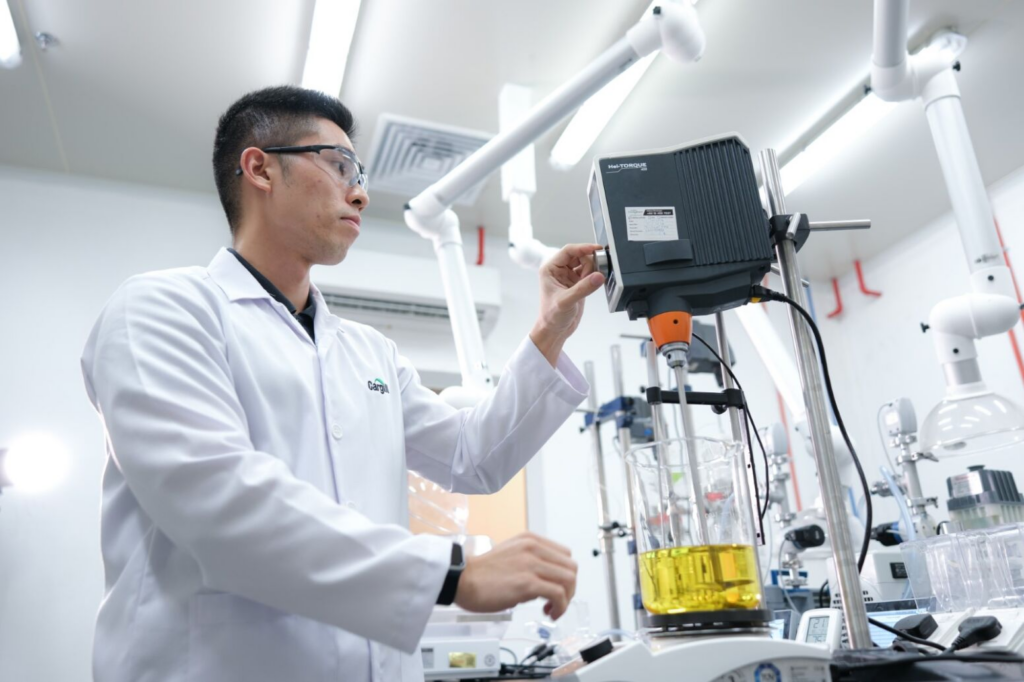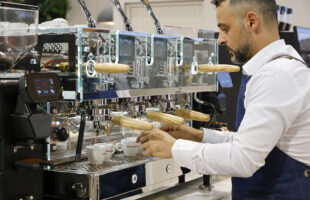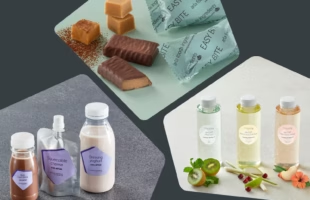
Courtesy of Cargill
By Cath Isabedra
In the dynamic world of food and beverage innovation, texture is becoming as crucial as taste and flavor, especially in the beverage sector.
Companies like Cargill are leading the charge, unveiling the intricacies of consumer preferences and the technological advancements that cater to them. Through their comprehensive research and development efforts, Cargill is setting new benchmarks in creating textured beverages, a testament to their commitment to being at the forefront of food innovation.
The Rise of Texture in Beverage Experiences
A clear understanding of consumer trends and preferences drives Cargill’s exploration into textured beverages. According to Cargill’s Food Solutions APAC research and development team, “The Asian consumer prioritizes mouthfeel (e.g., textural experience) in their beverages,” alongside the growing desire for healthier products. This insight is a cornerstone of their strategy, guiding their efforts to innovate in the beverage space.
The team elaborates, “In addition to our annual proprietary TrendTracker®, which showcases our insights intro macro food and beverage trends globally and in APAC, Cargill collaborates internally and externally with consultants and consumer insight teams to stay ahead and keep pace with trends. To better understand and meet the needs of the beverage market, spanning across the trifecta of taste, flavor and texture, the same is also applied for the beverage and textured beverage segment.”
Texture mapping, a technique employed by Cargill, measures and characterizes mouthfeel parameters, offering a comprehensive view of textural preferences. This approach has revealed a fascinating divergence in textural preferences across different regions of Asia.
For instance, North Asian consumers prefer a “rich and creamy mouthfeel” found in milk tea or milk coffee enriched with healthy inclusions like nata de coco. Conversely, in South and Southeast Asia, a “clean mouthfeel and light textures” are more sought after, manifesting in products like acidified milk-based and yogurt drinks.
Innovating for Texture

Cargill’s approach to creating textured beverages involves using functional systems, which are combinations of at least two types of food additives like emulsifiers, starches, and hydrocolloids. These systems are pivotal in achieving diverse mouthfeels, from light and refreshing to rich and indulgent.
The Cargill Research and Development Team explains, “compared to single ingredients, functional systems… have the better ability to stabilize and suspend particles,” enabling the creation of an endless variety of textures.
Modified starches, for example, are used to introduce denser and heavier textures, ideal for inclusions in beverages such as pearls in bubble tea drinks. Meanwhile, using pea protein and hydrocolloid blends allows for the formulation of beverages with stable foam caps or thicker, richer mouthfeels without compromising smoothness—this caters particularly well to the North Asian region’s preference for beverages with a creamy texture.
“With functional systems, we are able to tailor make a full range of solutions to cater to the needs and desires of our diverse customers.”
To further illustrate, consider the rising trend of yogurt beverages in Southeast Asia, where pectin plays a crucial role in a variety of products, including squeezable yogurt, yogurt jelly, and even yogurt ice cream. It facilitates and improves the incorporation of additives like fruit pulp, oats, and gel.
Meeting Health and Wellness Trends
As health consciousness rises among consumers, there’s a pressing demand for beverages that not only taste good but are also nutritious and low in sugar. Cargill has responded to this need by developing solutions that increase nutrient content while reducing sugar levels without sacrificing mouthfeel.

This initiative is crucial, especially for the Asia Pacific region, where sugar taxes in many countries have prompted a surge in demand for sugar reduction solutions.
“With changes and variations to the formulations for healthier and more nutritious beverages, the mouthfeel is invariably affected – to which solutions like hydrocolloids and functional systems are the answer to maintain the mouthfeel and texture of beverages as well,” the team shares.
Commitment to Sustainability and Safety
Cargill’s innovation in the textured beverage space is underpinned by a steadfast commitment to sustainability and food safety. The company ensures that all products meet the highest standards of food safety and quality regulations, from sourcing to production, which is integral to building trust with consumers and advancing the overall supply chain.

“While there are no specific regulatory requirements for textured beverages, we make sure to meet the requirements for the prevailing food safety and quality regulations in all countries where the products are sold.”
Looking Forward
Cargill’s state-of-the-art application and analytical capabilities in the Asia Pacific region – anchored by four innovation centres in Beijing, Shanghai, Singapore, and Gurgaon – are pivotal in developing new systems that cater to consumers’ evolving tastes and preferences. Cargill is well-positioned to support its customers in product development and co-create innovative solutions by combining global expertise with regional innovative capabilities.
“We want to be our customers’ main source of inspiration and growth, setting new standards for innovating and collaborating, and will do so by providing the end-to-end research and development capabilities to support our customers and advance the sector.” They add, “Our state-of-the-art application and analytical capabilities in Asia Pacific ensures the formulation that we develop conforms to the taste, texture and stability.”
The evolution of textured beverages marks a transformative era in the food and beverage industry, propelled by increasing consumer demand for products that not only tantalize the taste buds but also align with healthier lifestyles and environmental sustainability.
Cargill’s unwavering commitment to research, innovation, and collaboration is not just setting new industry standards but crafting the future of beverage experiences—one sip at a time.
This story first came out in our “Innovation and the Art of Mouthfeel” issue.








